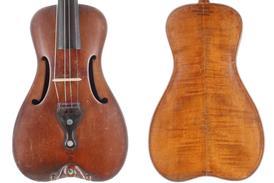Madder root has been used since ancient times to create a deep red pigment – but the making process remains enigmatic

Raw madder root with samples of the finished pigments Photo courtesy Guy Harrison
The following is an extract from the January 2020 issue. Click here to log in or subscribe. The January 2020 digital magazine and print edition are on sale now.
Madder root has been used since ancient times to create a deep red pigment – but the making process remains mysterious. In these extracts from the January 2020 issue, violin makers Hugh Withycombe and Guy Harrison describe the thinking behind their three-year quest to create the perfect recipe
Like many others, we had made some pigments from madder root early in our careers. The results were variable and the process was by and large lengthy and haphazard. The colour hue was not always what we wanted. The intensity tended to be low and the pigment itself sometimes gritty and grainy. This meant it often felt like mulling gravel into your varnish: there were problems with opacity and unwanted texture. It was an easy decision for us to buy and use good-quality commercial pigments, such as those from Magister or Winsor & Newton, in our instrument making.
Fast-forward 10 to 15 years and these sources had become unavailable, while our own existing supplies were running low. So in 2016, during the ‘Obie 1’ violin project in Oberlin (see The Strad, November 2016) we decided to use our own pigments as well as a home-cooked varnish.
…
The desire to know – what we would call ‘sufficient why’ – led us down the path of more comprehensive experimentation in 2018 and 2019. We say ‘sufficient why’ because neither of us is a trained organic chemist, nor do we have the intention of setting up commercial pigment production. We did not need to understand all the chemical processes, nor maximise yields while minimising input costs. We wanted to know enough to vary our recipes to make a repeatable, intense, transparent pigment of our desired hue in our workshops. As our main intention was to use the pigments in the manufacture of new instruments, even some variability of transparency and colour hue between batches was acceptable.
To read the full article, in which Hugh Withycombe and Guy Harrison describe in detail their experiments into the extraction and preparation of madder root for the creation of pigment for varnish, with recipes, click here to log in or subscribe.
The January 2020 digital magazine and print edition are on sale now.
Reference





















































No comments yet